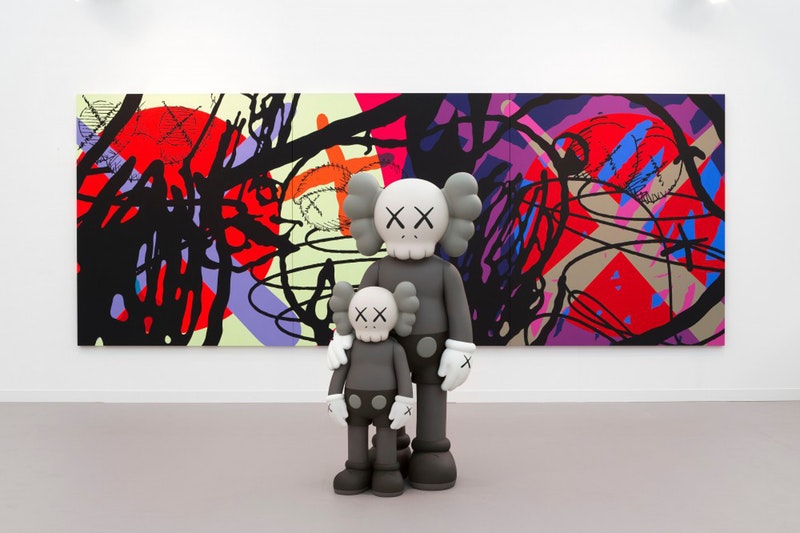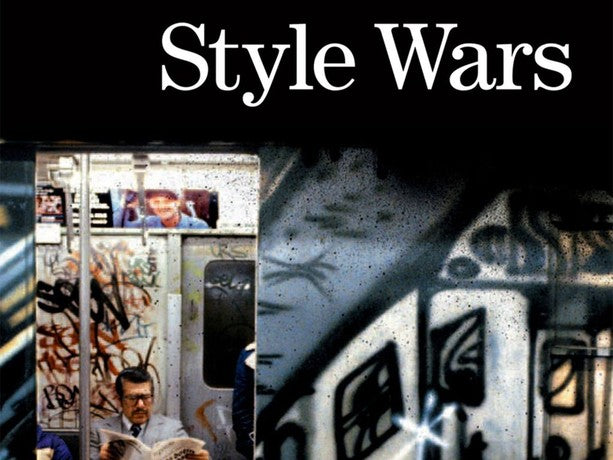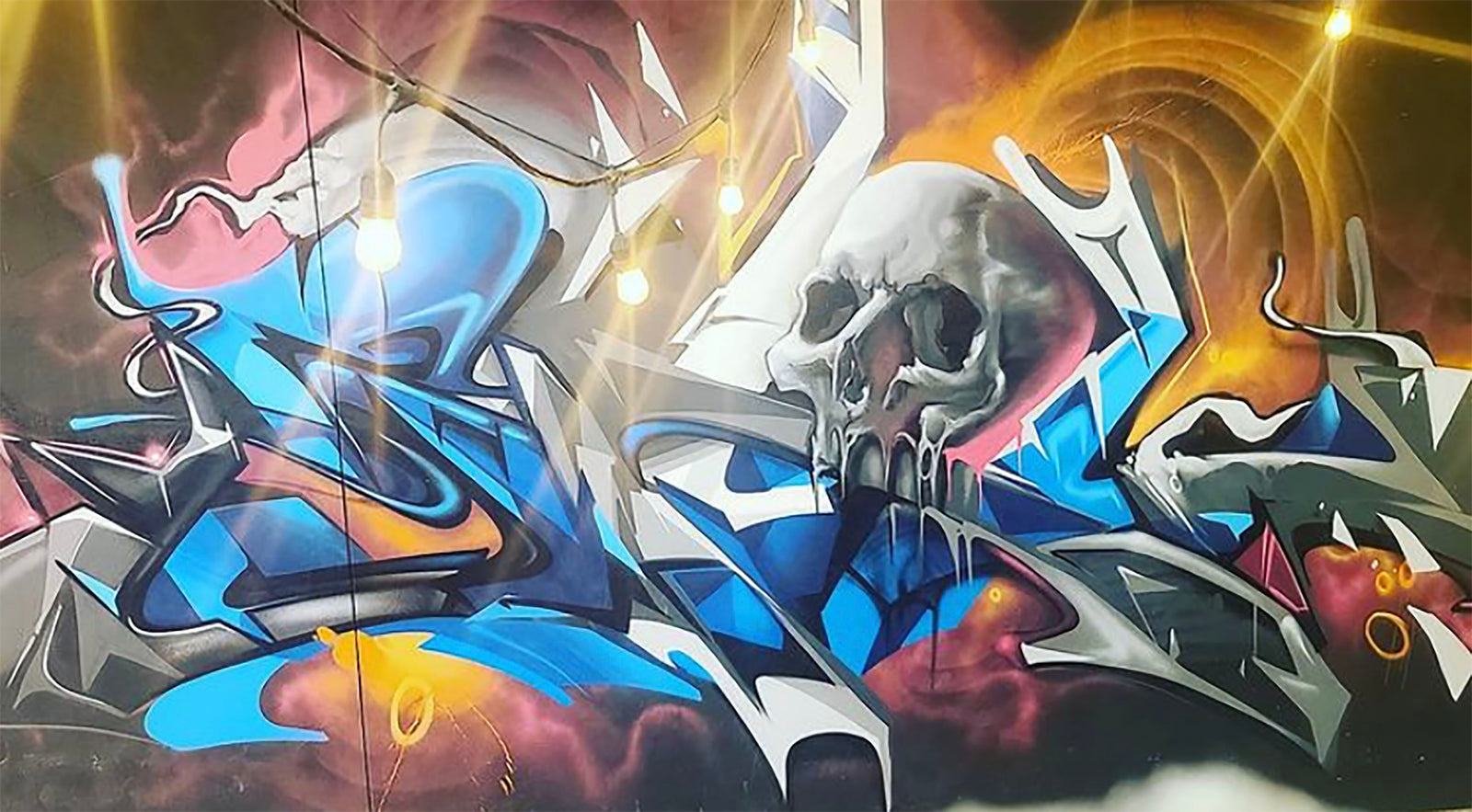Born in Jersey City, New Jersey in 1974, Brian Donnelly – better known around the world by his moniker KAWS – had an early interest in art and design, and has been a part of the street art scene since middle school, when his budding interest in graffiti overlapped with his love of skating.
As a teenager, KAWS painted on trains, walls, and any other surface he could find, and by the 1990’s the young artist had created over 100 pieces of mural art, most tagged with those four now-iconic letters, K-A-W-S. But for all the speculation on their origin, KAWS told CBS’ Serena Altschul: "It's just a combination of letters I liked.”

The City Learns About KAWS
Though KAWS had always seen his art as more of a hobby or sport than a commercial vocation, an encounter with a high school art teacher (who had managed to earn money from his own illustrations) inspired him to seriously consider a future as a professional artist.
KAWS went on to study illustration at the School of Visual Arts in New York City, and following his graduation in 1996 he found work in animation as a background painter for such television shows as Nickelodeon’s Dougand MTV’s cult classic Daria, experiences which likely informed his bright, bold aesthetic and prefigured his later forays into pop art and cartooning. Indeed, in an interview with musician Pharrell Williams, KAWS said that it was during this time that he discovered the cell-animation paints he would later use extensively in his own work.
In the late 1990’s, already a self-described “smart ass kid” and rule-bender, KAWS found a key that gave him access to bus-shelters and phone-kiosk light boxes across New York City, a discovery that would spark an iconic period of sophisticated rebellion in the artist’s career and lead to a flurry of new works by KAWS. With his subversive, irreverent street art spreading across the city, a larger, more diverse audience would soon learn about KAWS and see KAWS’ art.

With this newfound power in hand, KAWS began painting over public advertisements, targeting campaigns created by such prominent brands as Captain Morgan, GUESS, and Calvin Klein. In one such piece – one of his best-known works of “subvertising,” which sees artists mimicking the style of public advertising to undermine or ridicule its commercial message – KAWS painted an X-eyed, skull-headed, tadpole-like creature wrapping its tail around the body of supermodel Christy Turlington.

While KAWS intentionally minimized his brushstrokes in such works, forcing passersby to do a double-take and question whether his alteration could, in fact, be part of the original ad campaign, KAWS’ street art subversions were less politically motivated than those of an artist like Banksy. Instead, KAWS describes his work as being in dialogue with the ad’s creators, the artist telling Tobey McGuire in Interview Magazine that he “actually liked the visual nature of [those] ads” and “really liked some of the photographers [he] was painting over.”
Instead of being motivated by antagonism, then, KAWS seems to view such work as a sort of forceful collaboration, as the artist saying simply: ‘My turn.’
Not Just Passing Through: New Ways to See KAWS’ Art
KAWS’ desire to subvert, repurpose, and be in conversation with popular culture is apparent to all who see KAWS’ art, even as, in recent years, it’s moved into the fine art space.
KAWS has become best known for his irreverent riffs on iconic pop culture characters like Elmo, Pinocchio, Snoopy, the Michelin Man, and, most prominently, Mickey Mouse. These reimagined characters stand in stark contrast to their forebears, at once familiar and alien, a few alterations stripping away their more lighthearted or whimsical origins.
Their eyes are almost always replaced by large X’s, their heads by mandible-less skulls and a pair of crossed thigh bones; their bodies are sometimes divided in two, one half displaying their bones and inner organs; they hunch with drooping heads and slack shoulders or sit with their faces buried in their hands, as if weeping; occasionally two identical figures stand together, one with its hand on the other’s shoulder, comforting its companion.
In the early 2000’s, ever-striving to find a way to “get through life making stuff,” KAWS broke new ground as a pioneer in the increasingly-popular world of artist-designed collectible toys. Influenced by pop artists such as ClaesOldenburg andCoosje van Bruggen – famous for their enormous, playful sculptures of everyday objects like dustpans, shuttlecocks, and apple cores – KAWS began designing and producing miniatures of his characters as vinyl toys, most no taller than a foot, a move that allowed him to work in three-dimensions without patronage or commissions. In an interview with the New York Times’ T Magazine, KAWS described his approach as one in which, instead of a single “monumental 10-foot thing,” he hoped to create “a thousand 8-inch things” with the same care and quality control.
Such new works by KAWS have become a cultural phenomenon, with demand for the figures growing to such an extent that, upon the release of a new toy, would-be buyers crashed the website of the Museum of Modern Art in New York. Though KAWS has also created large-scale works, such as his piece “Companion (Passing Through)” in Ft. Worth, Texas, he strives to retain the look and feel of his miniatures: most feature a gray, plastic-like finish or else are made of wood, giving them the look of carvings on a child’s shelf.
Without Companion: An Eruption of New Works by KAWS
In recent years, KAWS has only continued to expand his reach, exploring new forms, subjects, and outlets for his work. Along with his fine art and designer toys, KAWS has collaborated with major brands on custom clothing and footwear, magazine covers, and album art, including cover art for Kanye West’s now-classic album, 808’s & Heartbreak,a version of which features a pair of X-branded Mickey Mouse gloves tearing a deflated, heart-shaped red balloon in half.
KAWS’ shift into the mainstream seemed undeniable in 2012, when he created a 41-foot long balloon of his “Companion” character for the Macy’s Thanksgiving Day Parade – a gray Mickey Mouse lookalike in gloves and big-buttoned shorts, the icon’s familiar face replaced with a large skull, his ears formed of two crossed bones, his eyes plucked out, leaving behind a pair of X’s, the classic cartoon shorthand for death. Just a year later, in 2013, KAWS was commissioned to redesign the iconic MTV Video Music Awards’ Moonman statue.
As such projects grow his notoriety and the public continues to learn about KAWS and see KAWS’ art in unexpected places, he hopes to open up possibilities in the minds of his audience, to spark new ways of seeing, asking himself – as he did in his T Magazine interview – how he could “communicate within these avenues to make those bridges…and pull [people] out of their holes into other worlds?”
This attitude has been consistent throughout KAWS’ career, as seen in an interview with T. DEE’s Under Cover magazine from 1996, in which, at just 21 years old, KAWS mentions being motivated by the idea of “kids seeing your things in person where they would never” otherwise be able to.

“On and On”: The KAWS Hong Kong Show
A pair of gallery openings at Galerie Emmanuel Perrotin in Tokyo and Hong Kong continue to find KAWS stretching for new modes of expression. KAWS’ 2018 shows feature mostly abstract works – vibrant colors and splatter-like shapes, some with hints of his more-familiar character work sneaking into view. These new works by KAWS demonstrate his continued interest in deconstruction and playfulness, in elements pulled apart and reassembled like the plastic pieces on a Potato Head toy.
Still prominent are KAWS’ iconic X’s, but here they are distorted, detached from their usual context, the X’s, like the colors of work themselves, seemingly plucked from a familiar place and dropped into a new, chaotic environment. Not far off from such new works by KAWS stand some of his classic figures -- a pair of X-eyed Mickey Mouse companions, perhaps a parent and child; a waxy, pink Elmo -- their presence reminding visitors that even the artist’s own work and motifs are subject to his passion for remixing and reimagining.
KAWS’ 2018 show makes it clear that the artist shows no sign of slowing down, and it seems no form or style is off-limits for him. As KAWS told Interview Magazine: “I’d like to make a plane, a boat, a building. It goes on and on.”
KAWS’ 2018 show at Perrotin in Tokyo runs through May 12; the companion KAWS Hong Kong show runs through May 19.












Leave a comment (all fields required)